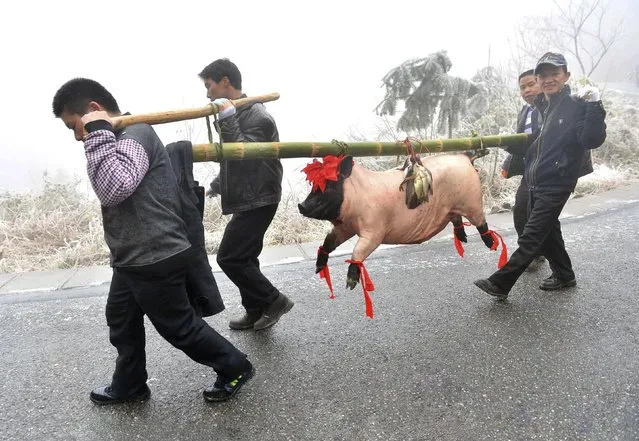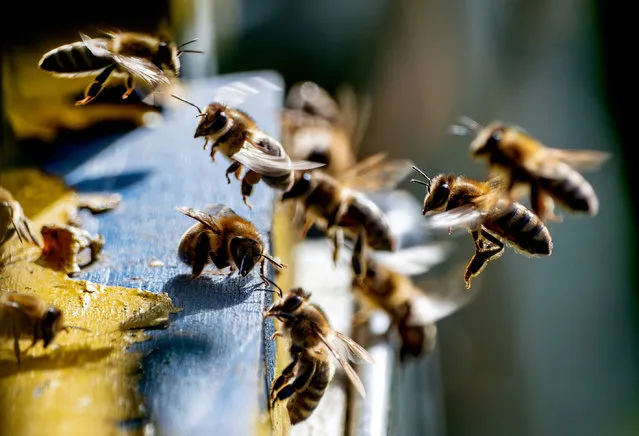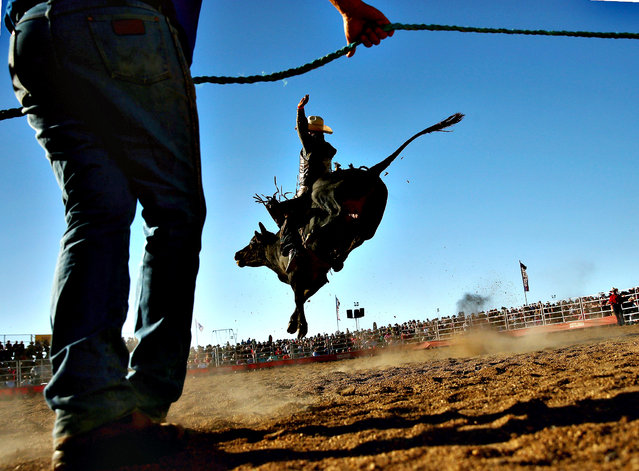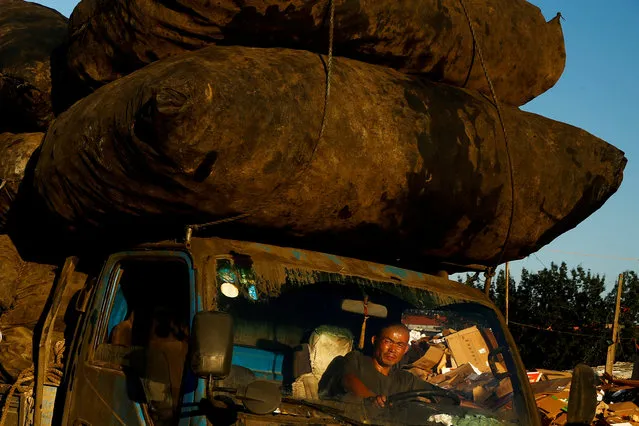
Residents carry a slaughtered pig with a bamboo pole as they walk home on a street, which was shut to traffic due to ice, in Leishan county, Guizhou province January 31, 2015. Blizzards and icy rain that lasted for several days at the end of January have disrupted traffic, collapsed houses and decimated crops in central Chinese provinces, Xinhua News Agency reported. (Photo by Reuters/Stringer)








